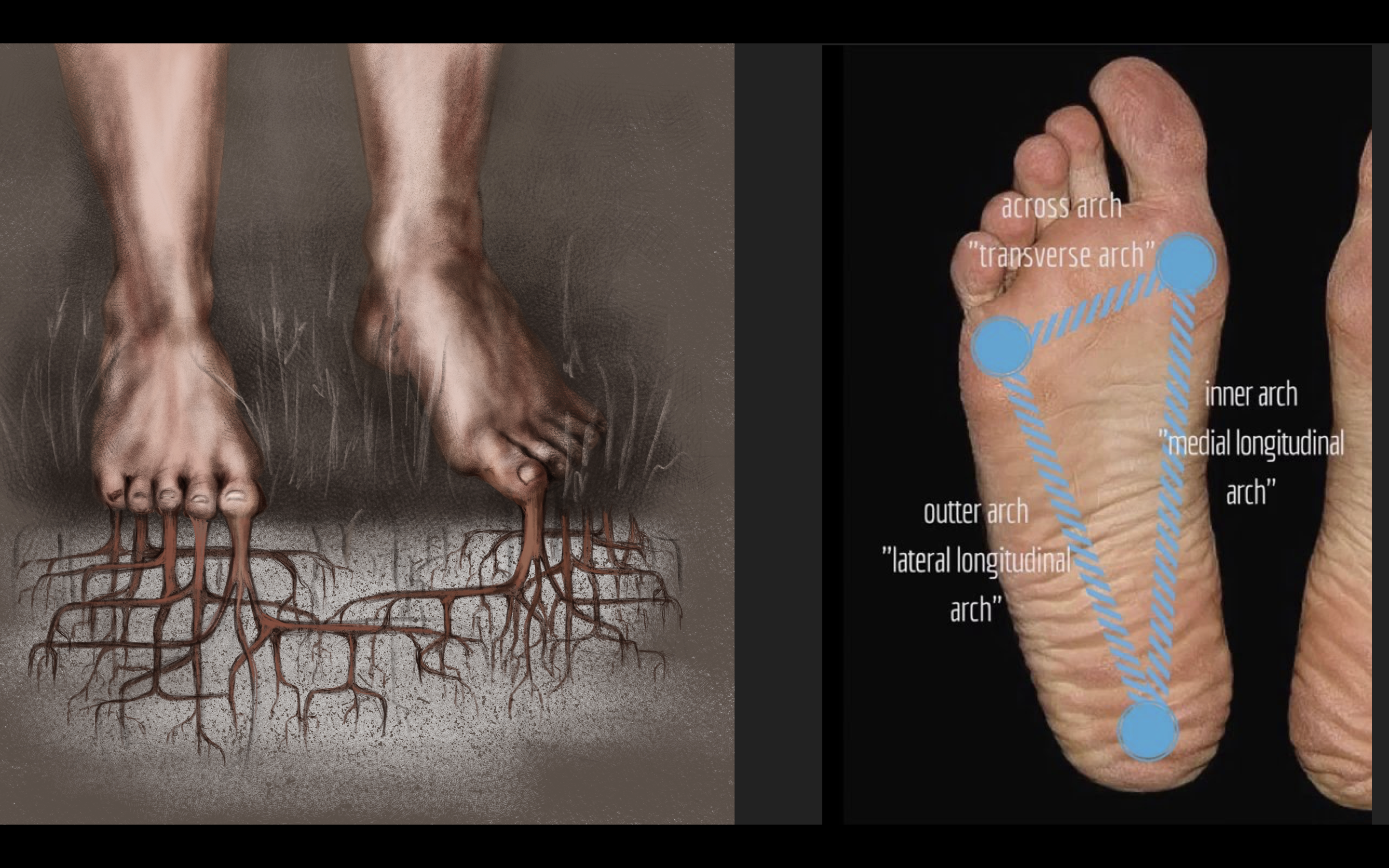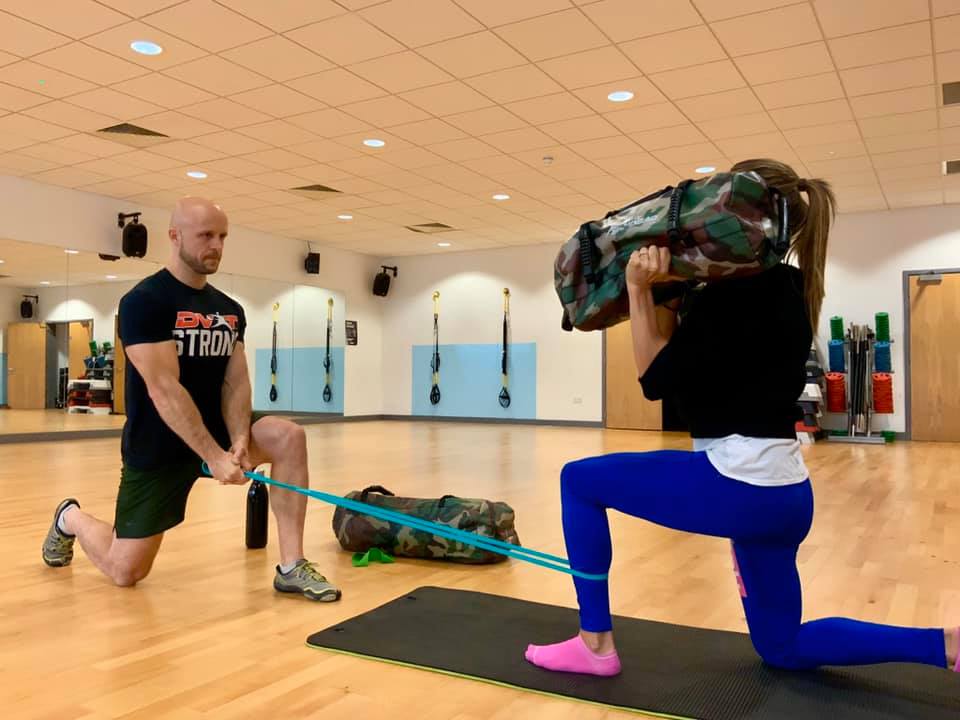How Strong Feet Will Make You Stronger & More Resilient
2023-06-27
Jessica Bento, Physical Therapist (Creator DVRT Restoration Certification, Knees Over Toes Course, DVRT Rx Shoulder, Knees, Pelvic Control, & Gait Courses)

I’m learning in the fitness industry, a good idea can get dissected in ways I never thought imagined. It can get manipulated, complicated, it can become the sole focus of a coach. However, there is no one idea that solves everything, the body is complex and that is why starting with BIG and foundational ideas can help us develop a filter to better appreciate what is truly important in teaching and helping people learn to move better and what is being unnecessarily complicated. A great example is understanding the feet in building better movement, strength, and helping a lot of aches/pains.
Why Are Your Feet Important
In most simple terms, your feet are the foundation for much of our human movement. We are bipedal animals and when we think about moving in life or sport, it is predominantly upon our two feet. So, just as any good building analogy, if you have a weak foundation, it is going to impact everything up the chain. You don’t need to understand tons of anatomy to understand this relatively simple idea right?

For the last few years the idea of being barefoot has really gained steam. If you watch my social media, you know that I love training barefoot. It is easier to learn to use the ground correctly and you simply have more awareness of what your feet are doing in a movement. However, JUST being barefoot doesn’t solve all problems? The goal of being barefoot is to have your feet to be more “active”.
Josh explains above how we can cue or why using the feet first for any movement sets us up to move better and solve many of what may first appear to be mobility issues. Again, if we have poor stability with our foundation, the body is going to compensate and that can often appear as though we have mobility issues when really they are more stability challenges. You will also notice from Josh’s explanation that the feet play a big role in how we use our glutes and core, so we really shouldn’t be saying things like “squeeze your glutes” or “tighten your abs”, we SHOULD be teaching people how to use their feet better.
What Does It Mean To Use Your Feet?
Getting people to use their feet is where a lot of people try to sell complex ideas that aren’t actually necessary. For the majority of instances in the gym, we want people to really use the “core” of their foot. If you want to call this creating a “short” foot that is great, but the concept is the same as you see in the picture below.

Sadly, I see even many of my fellow therapists missing this point and doing things like wedging heels, putting wedges under different aspects of people’s feet, and so on. I say sadly because giving artificial stability to the foot is doing the same thing that causes people to get upset about wearing thick shoes. These artificial strategies don’t teach the foot/lower leg and the nervous system how to have the body move properly. While I am all for strategies to help people learn how to use their body better, using all sorts of odd wedges don’t solve issues and may even cause new ones to develop.
What should you do instead? For one, aim for feedback that helps convey to the person how to use their feet better. A very simple strategy is if possible, have someone stand barefoot and tell them not to allow you to lift up their toes. When they resist you trying to lift up their toes they automatically go to using the core of the foot and develop that “short foot” posture. A lot of people hate this cue because it simplifies a lot of what we are trying to achieve and doesn’t require overly complicated strategies that make others look smart, but don’t help you impact people.
You can use this idea when people are performing hip bridges, in half kneeling, squatting, and so many movements. Using something so simple is not only great when people are first learning to train well, but when you progress to more sophisticated exercises people may forget their foundations. Of course you may not always want to have to go to lifting people’s toes, you may work in a group environment, or you want a reminder to keep the feet active that doesn’t require you to be part of the process. That is where bands can be helpful in helping people learn or remember to use their feet.
Bands & Great Feedback
While various wedges create artificial stability for people’s feet, using bands as we teach in DVRT allow us to cue the feet to work as they would naturally. This is what good feedback and coaching should accomplish, how do you get the body on its own to work correctly.
The bands work best if you are barefoot or in socks. If you are in shoes, even minimus shoes can be tough, the effect is somewhat less. The bigger the shoe and the less feedback the bands offer. However, there is a way to use bands for those that wear shoes as well, but first….
We have shown many times using xl mini bands (we recommend those from Perform Better) and placing people in somewhat unstable environments like half kneeling, split stances, or even sprinter stances are a powerful way to get people to both want and need to use their feet!

From there, using many of our DVRT exercises, especially movements like Arc Presses, for example, will really reinforce how the feet are important for every movement even those in the upper body.

If you are wearing shoes then you can still cue people but we may use a super band as Greg Perlaki shoes and give a little feedback to the ankle or lower leg. You don’t want to pull someone over and you can use a post as well, but you want to have some tension to help people remember they are going to keep that vertical shin (for example in half kneeling) and balance by using their feet.
If you want to continue to get the feet working we can use a variety of stances, planes of motion, and levels of slow to fast movements that all rely on good use of the feet. The point is that yes, the feet are really essential to our performance and injury resilience. At the same time, we don’t need to overly complicate how we teach or think of the role of the feet in our training. Using strategies that actually benefit people, they can easily understand and implement, all lead to greater results than anything that is trying to be complicated for the sake of complexity!
Save 25% ALL throughout DVRT and when you invest in ANY of our Ultimate Sandbags/water bags you will get a year’s worth of workouts for FREE! Just use code “summer” HERE
© 2024 Ultimate Sandbag Training. Site by Jennifer Web Design.







